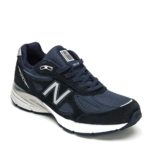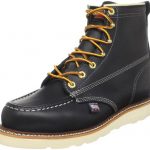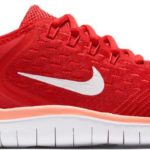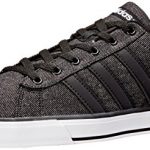In-depth research, review reading, comparing and analyzing the long-standing battle between Nike and Adidas soccer cleats has finally come to an end. The conclusion? Neither brand takes the cake. Sure, this might not be the definitive answer you were looking for, but there really is no better way to say which one comes out on top other than it depends.
Nike and Adidas are both big brands in the footwear industry. Both of them have had their fair share of hits and misses, and both bring something entirely different and unique to the table. So if you were hoping to settle your choice for the best soccer cleats based on branding alone, I’m going to tell you that there’s more at play here than just the logo slapped across your shoe of choice.
If you’re still a little confused, don’t worry – I’ve got you covered. Find out just what these two brands have to offer and which one can step up your game by diving into this complete review on their soccer cleat line-up.
A Matter of Weight
One of the main considerations you need to make when choosing soccer cleats is weight. As soccer requires a lot of running around and fancy footwork, any cleats that weigh your feet down too much can take a toll on your overall performance.
In this department, I’d have to decide in favor of Adidas. Generally, their cleats weigh 2 to 3 ounces lighter than their Nike counterparts. The Adidas Performance adiZero for instance weighs just 5.8 ounces. For anyone who has ever played soccer, having such a light weight on your feet can help loads with field navigation and speed.
Nonetheless, Nike does have some pretty suitable contenders as well. For instance, the Nike Mercurial Vapor XI weigh just 6.6 ounces which isn’t bad all on its own. In fact, these lightweight cleats are just as popular among most casual players and amateurs.
Adidas cleats are commonly more streamlined and use lighter materials, though. So in my book, they really do come out on top as the better choice in terms of overall weight.
Measuring Power Capabilities
For players who are mainly focused on making hits, power cleats are the footwear of choice. This specific cleat design has a reinforced strike zone, giving some extra energy when you make those kicks.
The best entry Adidas has for this category is the AdiPower Predator TRX-FG. The Predator Technology has been changed a lot with the updates that Adidas has made to their line of soccer cleats. But I have to admit, the AdiPower Predator TRX-FG design is definitely a major upgrade from previous designs.
The material used for the uppers doesn’t stick to the ball, so you can get more spin out of your strike. Plus, the cleats feature a Powerspine which basically prevents the footwear from flexing backwards upon impact with the ball. Nonetheless, the spine does permit forward flexion to make running comfortable and natural.
In the Nike corner, we have the Nike T90 Laser IV. I would describe these cleats as the epitome of intuitive footwear innovation, bringing forward brand new possibilities that older models failed to bring to light.
Using a revolutionary design, the T90 Laser IV’s strike zone flexes naturally with the foot during contact. Fin-like structures fitted into the swerve zone give you a more accurate feel of the ball as it creates impact with your feet. The goal of this design is to give you greater control of your shot, allowing a margin of correction during the split second you make contact with the ball.
Between the two, I’d have to call Nike the clear winner in the power category. Their Laser design does more than just give your strike oomph – it allows you to calculate your shot by giving you a better feel of the ball upon impact.
Cleats for Taking Control
Players who are responsible for ensuring smooth passes and ball navigation across the field prefer to leverage cleats designed for control. These boots have elements around their pass and control zones to make maneuvering and running with the ball more efficient.
Adidas best control cleats has to be the Adidas Predator LZ. These boots have come a long way, with a much sleeker power zone compared to previous renditions of the design. Instead, Adidas decided to maintain more focus on sections of the uppers called the Lethal Zones. These use lighter, more responsive material that reacts to the slightest contact with the ball to give you an intuitive understanding of the ball’s movements.
Nike on the other hand boasts the CTR360 Maestri III – a cleat design that uses embossed control pads that increase the surface area for the ball to make contact with. This prevents unintentional spinning, exaggerated curves, and difficult ball handling. The cleats also use Kanga-Lite upper materials versus the Predator LZ’s synthetic, which is slightly more lightweight.
Again, I’d have to decide in favor of the Nike cleats. While the Adidas Predator LZ did come close to winning the category, the fact that the Nike CTR360 Maestri III considered surface area makes them a better performer all together.
Paying Homage to the Classics
Cleats don’t make the player, but they can help. Even then, all these modern advancements in cleat design don’t technically guarantee a better game. So if you’re looking for soccer cleats minus all the fancy bells and whistles, then a heritage design might be right for you. These cleats do without all the dramatic and complicated technology. So these classic, true, blue, top performing, all around cleats get the job done minus all the contemporary jargon and design.
At this point, I think it would be appropriate to take a look back and see which of the two brands was actually first to the cleats scene.
A Little Background on Adidas Cleats
As many of you might already know, Adidas’ first soccer cleat was released in 1925 and was designed by Adi Dassler himself. It was one of the first commercially manufactured soccer cleats in the world. By the 1950’s the Adidas soccer cleats became a worldwide hit with the release of the Samba – the brand’s updated soccer cleat design.
A Little Background on Nike Cleats
Nike’s first soccer cleat came out in 1971 – a good 46 years after Adidas’ first design. It was the first design to use the swoosh logo, and was designed to combine stability, traction, and control. In many ways, this cleat took cues from more prominent designs that were currently on the market – including that of Adidas.
Contemporary Heritage Cleats from Nike and Adidas
So, it’s safe to assume that when it comes to understanding the essential concept of a cleat, Adidas should have the upper hand. And in many ways, that proves to be true.
The best Adidas heritage soccer cleat on the market is the Adidas Performance Gloro. This design just exudes true blue soccer cleats, giving you power, control, and speed all rolled into one classic design and silhouette. If there’s one thing though that gives it away as a contemporary cleat, it’s the Gloro’s Kangaroo leather and comfort frame outsole. This combo’s purpose is to boost durability for a harder-wearing boot.
Nike’s most prominent heritage cleat is the Mercurial Superfly FG Soccer Shoes. Weighing in at 9.5 ounces, the Mercurial Superfly FG is on the lighter side of the weight spectrum. Again, this cleat does away with all the confusing tech. The intention was to simply give you a straight forward boot that you can use for a variety of settings and play styles. So really, what you see is what you get, and in many ways, that can be just enough for casual use.
In my opinion, both designs do pretty well. But because the Adidas Gloro’s are lighter, they seem to be the more intuitive selection. Plus, the combination of materials and construction that doesn’t complicate the overall design of the cleat makes it an impressive marriage of classic and contemporary appeal.
The Verdict
So which of the two brands comes out on top as the ultimate soccer cleat manufacturer? I’d have to call this one a draw. When you look at it from all the angles, it’s easy to see that both Nike and Adidas use unique technologies and designs that offer different benefits to their patrons. Plus, both of these brands seem to corner different sides of the industry, so there really seems to be a major discrepancy between the cleat options they provide.
Based on what I learned about these two cleat manufacturers, Adidas wins in terms of classic heritage cleats and lightweight boots for optimal speed. On the other hand, Nike proves to be the winner when it comes to power and control cleats.
Now, you might be wondering – how can you make a decision between these two brands? Simple. Consider your playing style and find out what you really want out of your cleats of choice. By figuring out the specific features you find most important, you can determine which of the two brands will best cater to your specific needs, standards, and preferences.













